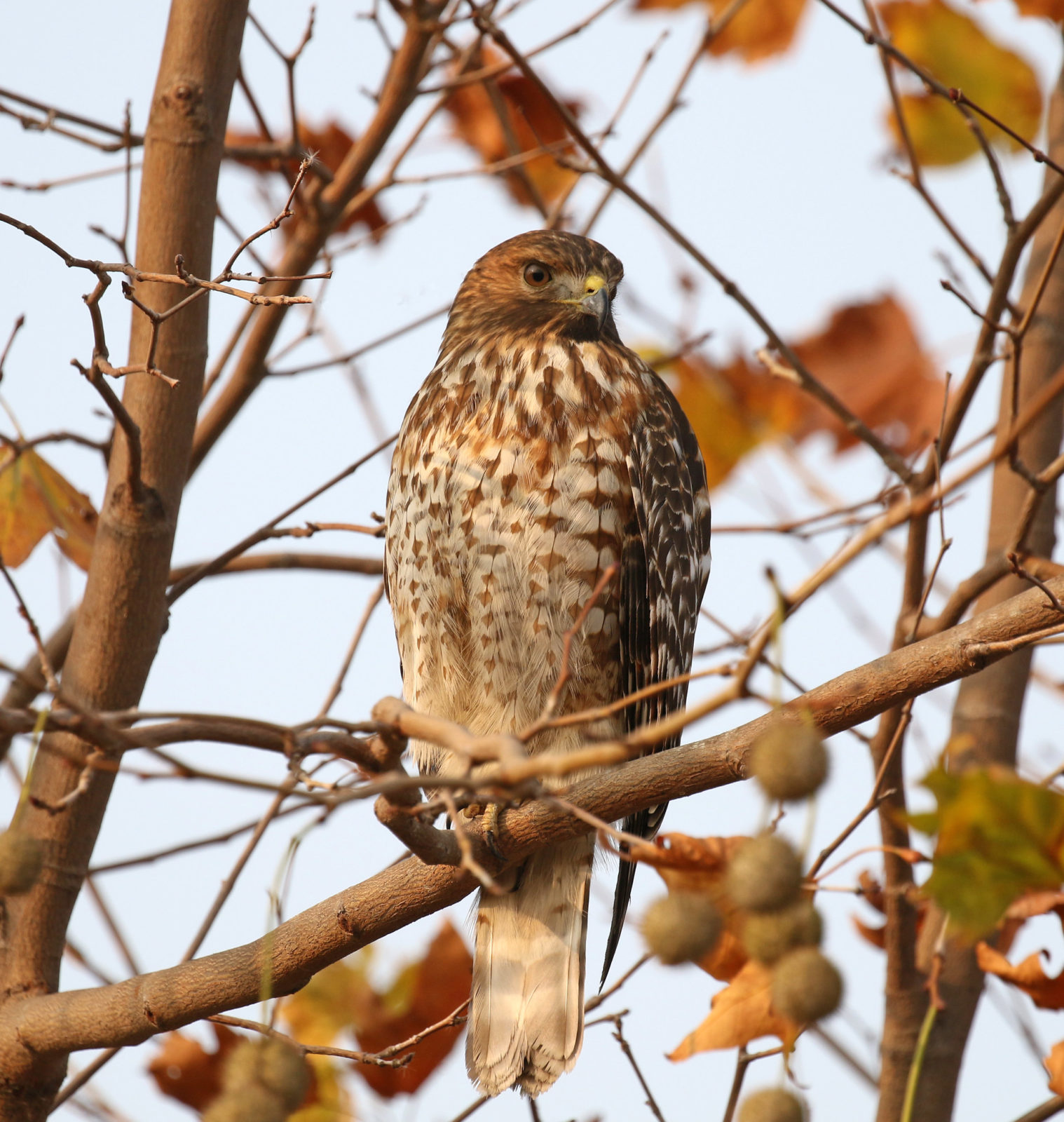
For many birds, autumn is a flurry of eating and movement to find stuff to eat, before winter sets in. The same is true for raptors and their prey. In north temperate zones, many small birds fly south, and ground vertebrates go into hibernation. Overall, prey get scarce, hawks get hungry, and hawks move. This wandering may take the form of directional migrations or of more ranging dispersal movements.
Here in the Bay Area, we have some rich sources of autumn prey: coastal and inner coast hills for mice, ground squirrels, and reptiles; grasslands for bunnies; bay and coast edges for shorebirds; willow beds, oak and fir forests for songbirds. It’s a great menu, and because of the relatively mild winters, much of it stays viable through the winter.
We are also blessed by migratory leading lines and large water boundaries. Leading lines are geographic cues that migrating birds use to travel south (and north). The Pacific Coast, the Coast Range, the Berkeley Hills, the Vaca Hills, the Santa Cruz Mountains, Tomales Bay, and the edge of the East Bay, are all potential leading lines to guide the flights of hawks.
Large water boundaries are significant as most hawks seem reluctant to cross open water, and so are more apt to fly alongside a lake, bay, or ocean. Locally, this behavior may have more to do with raptors finding “lift” over land masses via warm thermals and deflected up-drafts, rather than out of fear of flying over water.
Where can you go to see hawks on the move? The Marin Headlands hosts the largest known concentration of birds of prey in the Pacific States. The best lookout, Hawk Hill off Conzelman Road, is monitored daily by Golden Gate Raptor Observatory volunteers August through November. We see an average of 30 to 40 hawks per hour during the four-month flight, with 19 species of raptors represented. Our season-long counts are around 30,000 raptor sightings each autumn.
Although Hawk Hill gets the attention, the Bay Area is thick with hawkwatching sites. Think about high places near water or along north-south ridges: Sweeney Ridge (near Pacifica), San Bruno Mountain, Bolinas Ridge, Windy Hill (above Portola Valley), Mission Peak (above Fremont), the Grizzly Peak area (above Berkeley), and Point Pinole.
We’ve also found migrating hawks on the San Francisco side of the Golden Gate, especially west of the toll plaza, among the coastal bunkers high on the seacliffs. Also, it seems that some hawks “island-hop” through San Francisco, catching lift off of the various grassy hills. Try Grandview Park, Twin Peaks, Buena Vista Park, Mt. Davidson and even City College.




